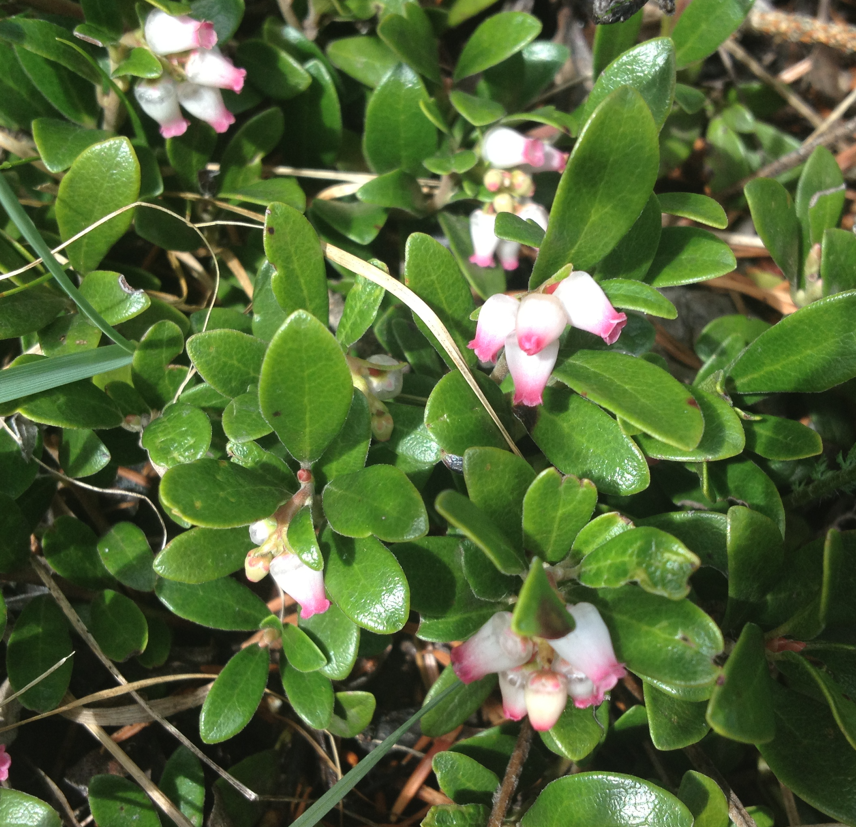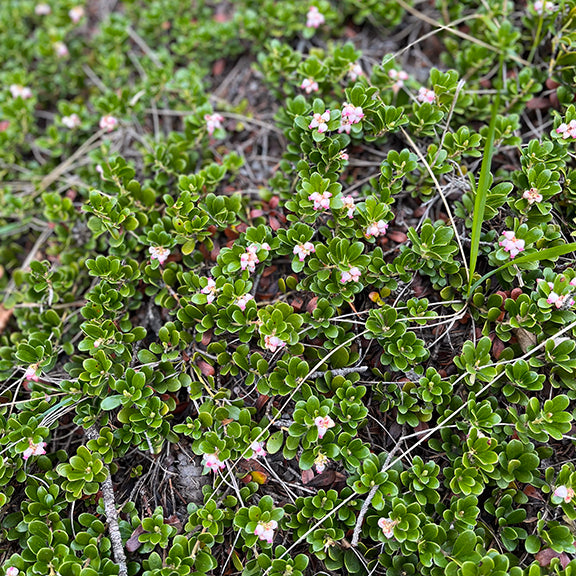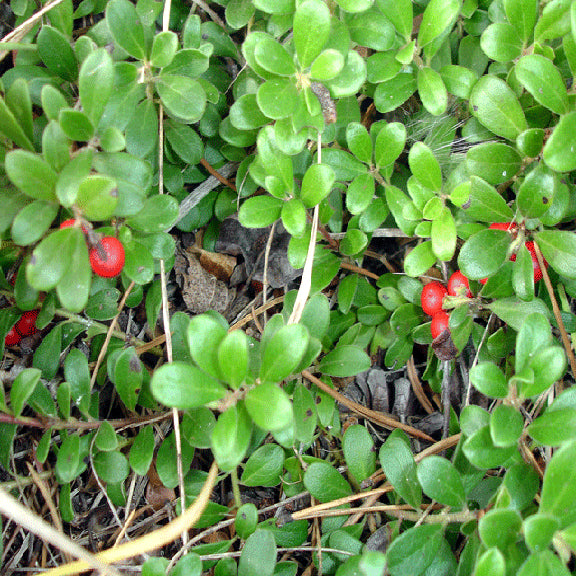Wild About Flowers
Arctostaphylos uva-ursi - Kinnikinnick
Arctostaphylos uva-ursi - Kinnikinnick
Couldn't load pickup availability
Kinnikinnick is a hardy, evergreen ground cover with trailing stems, small leathery leaves, and soft pinkish-white, bell-shaped flowers that bloom in spring. By late summer, it produces bright red berries that persist into winter, offering food for birds such as grouse, as well as bears, deer, and small mammals. Its evergreen foliage provides year-round texture and seasonal interest in naturalized or ornamental settings.
Though slow to establish, Kinnikinnick eventually forms a dense, low-growing mat ideal for erosion control on slopes, dry meadows, and sandy or rocky soils. It excels in dry, exposed sites and contributes to fire-resistant and drought-tolerant landscapes. Its low water needs and adaptability make it a valuable ground cover in both urban and rural gardens. Foliage is generally avoided by grazers, but berries may be consumed when other food sources are scarce.
Bloom Times & Plant Sizes
Bloom Times & Plant Sizes
Important Information - The "Bloom Period" is an indicator of the time period within which the wildflowers will bloom and does not describe the time period that a single plant will bloom. The "Sizes" listed are intended to be a general guideline to consult during plant selection. - Plant growth and bloom times will vary depending on geographical location & individual site conditions.
Edible & Medicinal Info Disclaimer
Edible & Medicinal Info Disclaimer
The Edible & Medicinal information on this site is for informational purposes only and should not be acted on without thorough research and professional guidance. We are not responsible for any adverse effects resulting from the use of or misidentification of plants.
Share
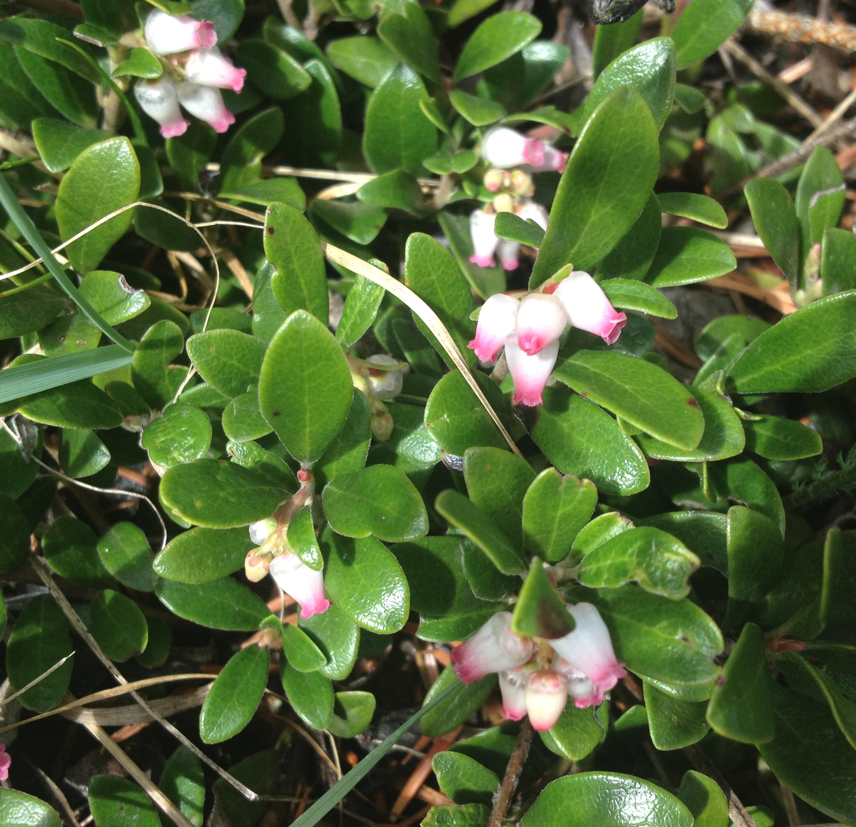
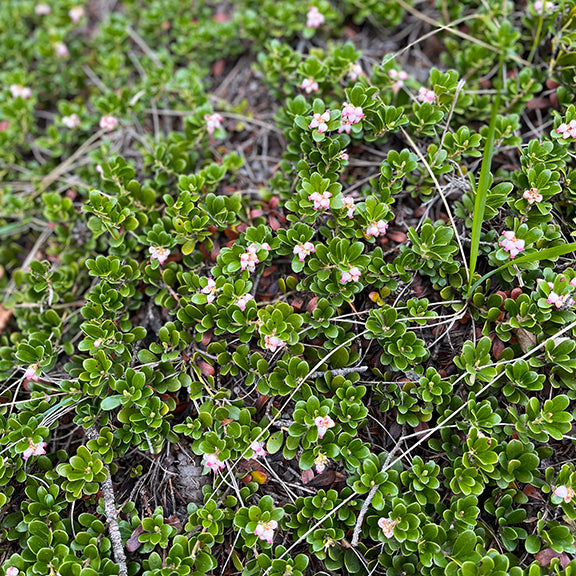
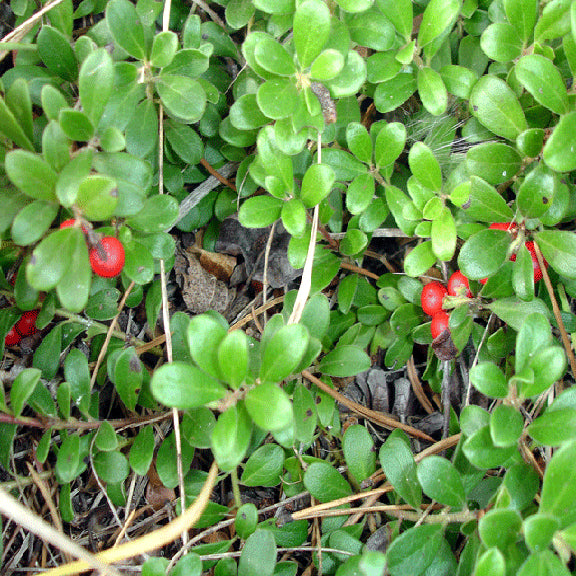
Plant Specifics
Seeds Per Pack
Seeds Per Package: 12
Light Conditions
- Sun
- Part Shade
Soil Conditions
- Dry
- Sandy
- Gravelly
- Well Drained
Height
- Under 6"
Width
- Mat Forming
Bloom Colour
- White
- Pink
Month of Bloom
- May
- June
Vigorousness
- Very Slow
- Slow
Deer Resistance
- Moderate
Features
- Birds
- Butterflies
- Bees
- Berries
- Used as Groundcover
- Urban Spaces
- Rural Spaces
- Medicinal Properties
- Edible Parts
Chinook Exposure
- Fully Exposed
Distribution Info
Kinnikinnick is found across Canada and into the US, flourishing in dry forests, open slopes, and rocky outcrops and nutrient-poor soils.
Traditional Edible & Medicinal Info
Indigenous peoples have traditionally used the leaves for medicinal teas, treating urinary tract infections due to their antiseptic and diuretic properties. While the berries are edible for humans and have been used historically as a survival food, they are mealy and mildly astringent.

